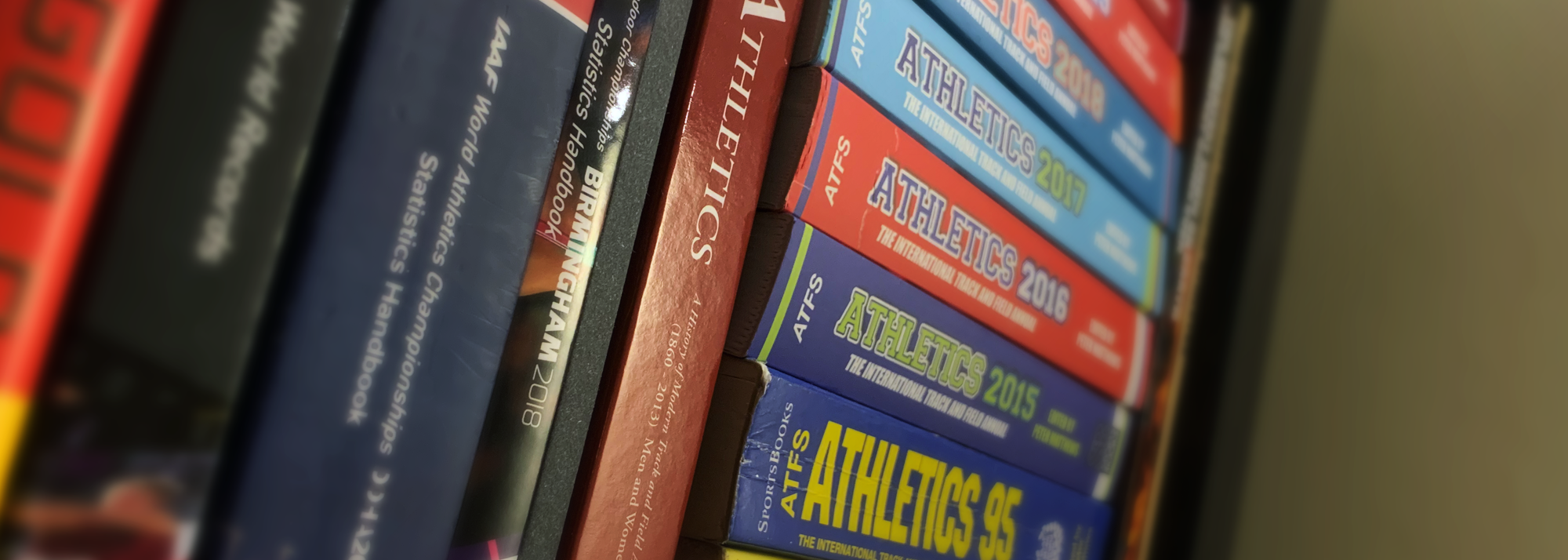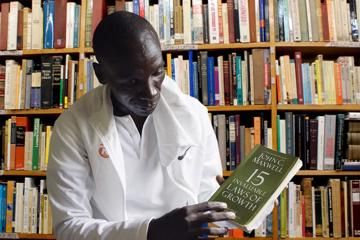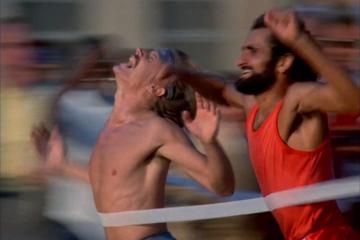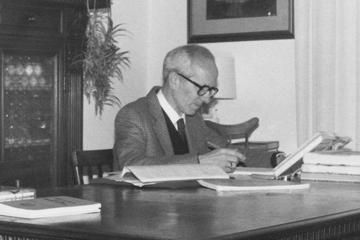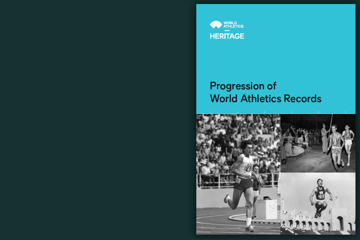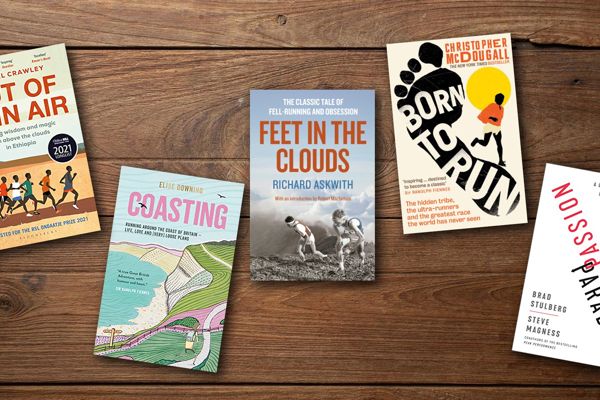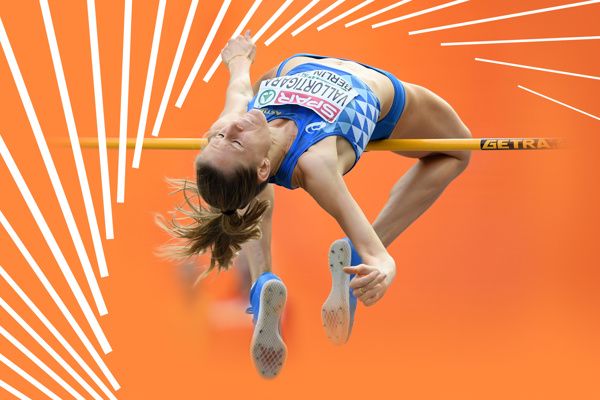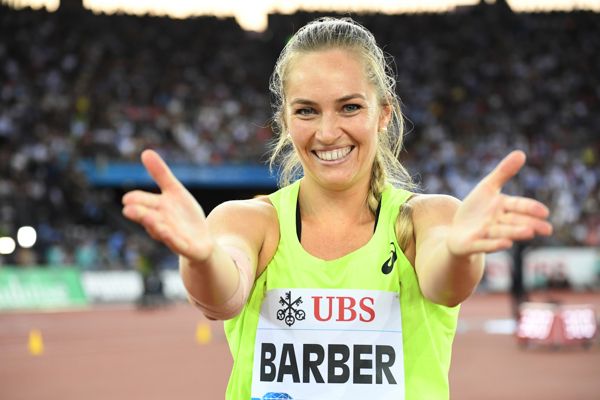Athletics books (© World Athletics)
We asked eight influential people within the sport for their go-to athletics resources. Here are their choices – from A(TFS) to Z(arnowski)
In a sport that is so reliant on numbers, record-keepers and the books they produce play a pivotal role in telling the story of athletics.
Anyone with any involvement in the sport – from fans, athletes, media and administrators – will have, at some point, utilised some form of statistical resource. Be it a magazine, book, website, programme – it’s quite simply impossible to follow athletics without crunching a few numbers.
So, to mark World Statistics Day, we approached a group of statisticians, writers and reporters and asked for their top choices of athletics publications. Certain titles cropped up more than once, while other selections were a bit more left-of-field.
But, as you’ll see below, it’s not just the number-heavy publications that feature here. Even some of the most hard-core statisticians recall being enraptured by the images and stories within certain books which ignited in them a passion for athletics that has stayed with them to this day.
If you’re looking to expand your library and swat up on athletics history, perhaps these titles are just the publications you need.
Contributors: MB = Mark Butler, CF = Carole Fuchs, GH = Garry Hill, RH = Richard Hymans, KN = Ken Nakamura, GP = Gabby Pieraccini, PV = Pierre-Jean Vazel, MW = Mel Watman.
 ATFS Annuals
ATFS Annuals
Peter Matthews
MW: As someone who has written a few books myself, I am in awe of the amount of research undertaken for the ATFS Annuals, particularly those edited by Peter Matthews for the past few decades.
KN: These are an absolute must.
 World Championships / Olympic Games Statistics Handbooks
World Championships / Olympic Games Statistics Handbooks
Mark Butler
MW: Mark Butler’s encyclopaedic statistical guides for World Athletics have been absolutely invaluable.
PV: A fabulous read.
 Progression of World Athletics Records
Progression of World Athletics Records
Richard Hymans
MW: A very honourable mention for this book, mainly the work of Richard Hymans.
PV: It has the chronology of all world records with full details, including short reports for most of them. I feel that every time I open the book I learn something new about the history of our sport.
GH: Invaluable.
[Pretty much every contributor acknowledged the importance of these first three publications!]
 A World History of Track & Field Athletics 1864-1964
A World History of Track & Field Athletics 1864-1964
Roberto Quercetani
RH: The first truly global history of the sport, packed with anecdotes and statistical detail.
MW: A comprehensive review of international athletics by the maestro, Roberto Quercetani. This remains the standard work of reference for the first 100 years of our sport.
 Athletics 74
Athletics 74
Ron Pickering and Mel Watman
MB: I was given this book for my 14th birthday and it cemented my passion for athletics. All the important news and results from an entire year (1973) are set out chronologically. I suddenly realised how much went on in the sport in the years between Olympic Games. Somehow I'd missed it all when it happened, even the European Cup Final in my own country. The colour photographs felt like luxury at a time when most of us still had black and white televisions. My appetite for the sport was whetted for decades to come.
 The Modern Olympic Century 1896-1996
The Modern Olympic Century 1896-1996
Ekkehard zur Megede
RH: Full results for the first 100 years of the Olympics, together with A-Z indexes for men and women of all Olympic competitors. While online works by Bill Mallon and Tomas Magnusson keep this information up to date, zur Megede’s work – his fourth Olympic book – was the most complete within a hard copy publication.
MW: The Olympics are at the centre of our sport and this is a fantastic publication. Just collating all the results was a remarkable achievement, but the index is a masterpiece of statistical research, containing date of birth, height and weight as well as each athlete’s Olympic placings.
 Women’s Athletics Yearbooks
Women’s Athletics Yearbooks
Peter Pozzoli
PV: Arguably more comprehensive than the ATFS annuals (which back then only carried men’s statistics) from the same decade. These annuals included deep world lists, continental and national lists, with special featured articles and lots of pictures.
 Get To Your Marks
Get To Your Marks
Ross and Norris McWhirter
MW: I came into the sport at age 12 in 1950 and this book really fired my imagination and gave me my early education in athletics history and stats.
Their monthly magazine, ‘Athletics World’, also set new standards.
 La Fabuleuse Histoire de l'Athlétisme
La Fabuleuse Histoire de l'Athlétisme
Robert Parienté
CF: I clearly remember this being the first major athletics book I had access to as a kid which happened to sit in my father’s library. As my interest in the sport started growing, I was later gifted with the 1995 edition. The mix of stories, pictures and stats was a great way to get to know the long history of the sport and its athletes.
RH: Statistics rounded out a history replete with Parienté’s wonderfully colourful descriptive style.
 All-Round Men: Heroes of a Forgotten Sport
All-Round Men: Heroes of a Forgotten Sport
Olympic Glory Denied
Frank Zarnowski
GP: “Do you know Zarnowski?” is a question that often greets me when I encounter a fellow decathlon enthusiast on the combined events circuit. The Zarnowski in question is Frank: coach, historian, stadium announcer and author of multiple books exploring the history of men’s decathlon and the evolution of combined events, including these two.
While these two books are great to revisit time and time again, it’s Frank’s regular newsletter from the Decathlon Association that I always anticipate eagerly – for fresh facts, figures and intelligence on NCAA combined event performances.
 African Athletics Annuals
African Athletics Annuals
Yves Pinaud
CF: These works have been an essential complement to ATFS, by providing deep lists for geographical areas, which have limited representation at world level in some of the sport's discipline. While athletes from East Africa make up a large majority of the distance lists in ATFS books, it's impossible to get an idea of the history of women's high jump in Africa without African Athletics. I have used the African lists a lot to reconstruct the early performances of athletes and for all-time lists. While not that different to the work of many statisticians that compile national lists, these regional lists have been invaluable because they cover areas whose national federations do not produce any and thus fill a big void.
 Athletics At The End Of The 19th Century
Athletics At The End Of The 19th Century
Hubert Hamacher
PV: This book sits at a cross roads between stats and history. It reveals all the beauty and complexity of the history of our sport, with lots of information, documentation, pictures and stats lists.
 CIS Athletics Statistics
CIS Athletics Statistics
Richard Hymans
MB: This was the final version of Richard’s collection of facts and figures from the USSR & CIS [Commonwealth of Independent States] era, 1922 to 1992. It’s hard to believe that so much is jammed into 390 colour-coded pages, and all compiled at a time before broadband when there were great barriers to the flow of news from Eastern Europe. It was especially helpful to see which athletes came from which of the old SSRs, because so many of them had been lazily described as ‘Russian’ in their heyday. The book is packed with material way beyond the reach of today's search engines.
 Track Newsletter
Track Newsletter
Track & Field News
GH: It’s perhaps a bit self-serving, but this is the one bit of print I can’t live without, both in an ongoing and historical (65-odd years of publication) source of high-end meet results.
 Decathlon2000.com
Decathlon2000.com
Janek Salmistu (website)
GP: This is the website that you’ll always find open on my browser. For more than 20 years, Estonian founder Janek Salmistu has been creating and maintaining a treasure trove of information and statistics about decathlon. From in-depth profiles of individual decathletes to country all-time lists, and day one/day two best performances to the all-time best female decathlon performances, Decathlon 2000 has pretty much everything you could want to know about decathlon. Whenever I go to a decathlon, you can be sure that I’ve got a sheaf of Decathlon 2000 athlete profiles printed, tabbed, and highlighted in my notebook.
 Yleisurheilu (Athletics)
Yleisurheilu (Athletics)
Juhani and Mirko Jalava
MB: This book, with an inscription from Juhani, arrived just as my work in athletics was intensifying ahead of the 1995 World Indoor Championships, so I devoured not just Juhani’s Finnish compilations, but also Mirko’s world (maailama) section. This contained 100-deep lists and much more, months before anything else was available along those lines. Simply produced but hardwearing and easy to use, the Finnish annuals are invariably delivered in the week between Christmas and New Year. After 25 years, I still don’t know how the Jalavas manage to do it all so quickly and accurately.
GH: In a modern statto ‘library’, of course, ink and paper have largely given way to electrons and I can’t imagine trying to function without having Mirko Jalava’s website – tilastopaja.eu – open 24/7.
Honourable mentions
• Athletics National Records Evolution 1912-2012
Janusz Wasko, John Brant, Gjörgy Csiki and Andrej Socha
• FAST Annuals
Federation of American Statisticians of Track
• The Olympic Marathon
David Martin and Roger Gynn
• 70-year History Of The Japanese Athletics Federation
Atsushi Hosino
• The Guiness Book of the Marathon
Roger Gynn
• Guiness Track & Field Athletics – The Records
Peter Matthews
• Asian Athletics Annuals
Heinrich Hubbeling
• National Athletics Records For All Countries In The World
Winfried Kramer

